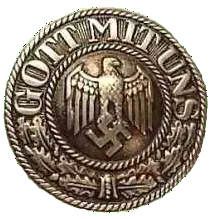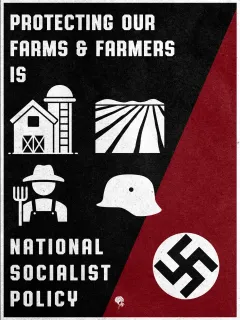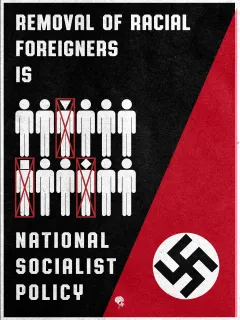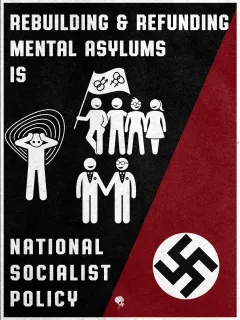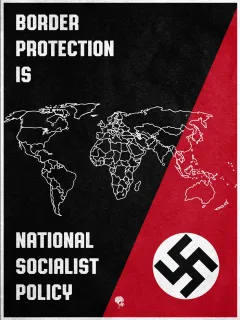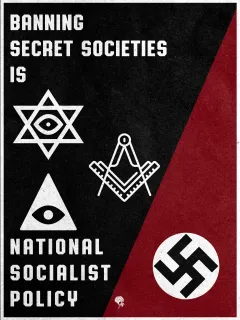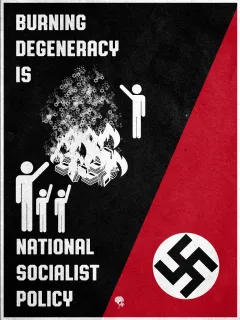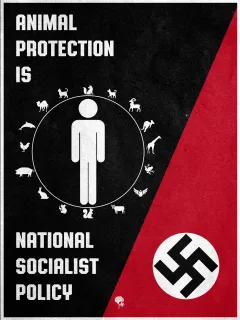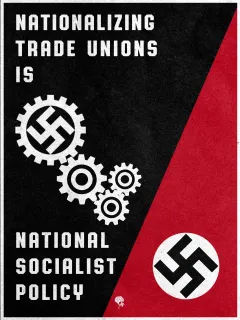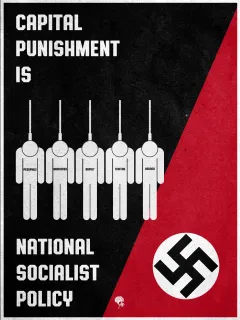Jews in Russia - Organization of Land Use (Jewish national districts and regions.)
Organization of Land Use (Jewish national districts and regions.)
During their century-old sojourn in dispersion, the Jews had never and nowhere engaged in agricultural labor. This used to provoke a critical attitude towards them by the native population.
Still in the Eighteenth Century, before the Jews became Russian subjects, an attempt was made in Poland to work out a law enabling the Jews to engage in agricultural labor; however, nothing concrete was done in this regard.
In Russia, in the first part of the Nineteenth Century, the government itself started to organize Jewish agricultural settlements on the fertile, rich and at that time only partially settled lands of South Russia. The new settlers were promised various favorable terms, and corresponding sums of money were allocated to build houses and other farm buildings. Supervision for all these was entrusted to the "New Russian Guardianship (migrating) Bureau". Eight hundred and ten thousand acres of land were placed at the disposal of this Bureau.
Here it should be noted, that the migrants were directed to the new lands only when houses had already been built for them. (The houses were built not by Jewish hands, but by hired workers). Monetary grants were also given to the new settlers for the organization of farms in these new places.
As a result of this arrangement, 8 Jewish agricultural colonies which accounted for 600 families with 3,640 persons were created in the province of Kherson by the year 1810. The government spent 145,000 rubles, which at that time this was a huge sum of money, on the construction of these colonies.
Later on the migrating activity was curtailed, owing to poor results produced by these migrant agriculturalists, and consequently the credits were also curtailed.
But arbitrary sporadic migration of small Jewish groups still continued. Under trying material conditions in resettled small Jewish towns of the Western region and Volhyn, and hoping to receive various favorable terms including exemption from military duties (decree of 1827), Jews embarked on this arbitrary migration.
But, of course, the results of the whole migratory movement and the government attempts to "attract Jews to agriculture" turned out to be insignificant. And up to the moment of the 1917 revolution Jewish farmers comprised a "microscopic" section. Owing to such numbers these Jewish farmers had no importance in the whole body of the Jewish masses of six million and played no rôle in the "Jewish question" of Russia.
The volume of this work makes it impossible to allot sufficient space and to describe in more detail this attempt to create Jewish farmers.
Jewish agricultural settlements — "colonies" — did exist in a few places before the revolution. Such settlements presented a sad and dismal picture: sloppily cultivated fields, and pitiful farm buildings.
Moreover, these settlements were scattered about and nowhere occupied any considerable part of the territory which could have been proclaimed as Jewish "national territory", if not as a region, at least as a district.
It is for this reason that during the first post-revolutionary years the question of the creation of any territorial Jewish unit was not raised. Jews limited themselves with the "personal-national autonomy" and by spreading Jewish cultural institutions throughout all Russia to serve Jews wishing to settle anywhere.
Only in 1924, when the civil war had ended and calm ensued, was a special committee created for the exploitation of land by Jewish workers (COMZET). The COMZET was created by a decision of the presidium of the Central Committee of the USSR and placed under the jurisdiction of Soviet Nationalities. A special organization for the dissemination among Jews of the idea of turning to agricultural works also came into being. This organization was called the "society of OZET" and it united hundreds of thousands of members.
COMZET and OZET attracted not only citizens of the USSR but also Jewish organizations outside of the USSR. For example, in the USA the Jewish charitable organization "Agrojoint" collected and directed to the USSR large sums of money for the help of land exploitation by COMZET and OZET.
The Soviet Government allotted large areas of prime land for the settling of Jewish farmers. The biggest part of the land was in the Crimea — over 342,000 hectares; 175, 000 hectares in the Ukraine; 28,000 hectares in Byelorussia. Besides that the creation of a separate Jewish "national region", Birobidzhan, was formed in the Far East. For this purpose a whole province of 4,000,000 hectares of land was allotted. The territory borders on China and has a moderate climate, and enormous natural resources. There are huge deposits of iron (Hingan), magnesium and coal, to say nothing of the great extents of valuable forest.
The creation of the Jewish national region of Birobidzhan was planned in 1933, whereas the organization of agricultural settlements and separate Jewish districts in the European part of the USSR had already started in the second part of the Twenties.
The Jewish press in the USSR as well as abroad regarded these measures by the USSR Government not only with approval but even with delight. D. Zaslavsky treats this subject more thoroughly and in detail in his book, "Jews in the USSR", published in Russia in 1932 by the Jewish publishing house "Der Emes" in Moscow.
S. Pozner also writes about this in the collection "Jewish World", published in Paris in 1939: "In the interest of the Jewish population, six autonomous Jewish districts have been organized, in which all administrative institutions, courts and learning institutions have "Yiddish" as their official language. All Jewish public and pedagogical institutions are maintained at the expense of the state. Here is some data about these districts:
|
Districts |
Area (hectares) |
Jewish population (persons) |
|
Kalinodorfsky |
75,000 |
16,000 |
|
Novo-Zlotopol |
45,000 |
14,000 |
|
Stalinodorfsky |
100,000 |
35,000 |
|
Freidorfsky |
100,000 |
20,000 |
|
Larindorfsky |
100,000 |
20,000 |
|
Birobidzhan |
4,000 000 |
20,000 |
The Jewish autonomous districts have existed for ten years. During this time, as L. Zinger points out (in his "Die Soziale Aufrichtung"), in these districts 17 collective farms had been created, 8 machine-tractor stations had been built, and 113 schools had been established, of which 42 were high schools and 4 technical schools. Two daily newspapers and one monthly magazine are published there. There is also one musical-ballet school, two theatres, a library, a movie theatre, etc."
Mark Slonim, well-known in Russian-Jewish émigré circles' also writes as enthusiastically about the activity of COMZET and its results. In his sketch "Jewish Writers in Soviet Literature", published in the collection II "Jewish
World" (New York), Slonim writes:
"In some cases Jews recognized themselves as a national minority, having the right to cultural autonomy. In literature, little is said about the life of the Birobidzhan Republic, in which, as in some collective farms of the Ukraine, the official language is Jewish (school instructions are also conducted in it). In these districts before the war a kind of special form of existence and daily living had been created for those who, by force of organic gravity or conscious decision, did not want to submit to assimilation and desired to preserve their national peculiarities. With a special love Jewish writers depicted Birobidzhan, where young people, overcoming all difficulties and struggling with severe natural conditions, are building the "Jewish-Soviet home" with enthusiasm. The poet, N. Fefer, ardently believes in a bright future for this endeavor:
I walk on marble boulders,
Whisper in Jewish forgetfully,
While mountain brook, slowing down
Its run makes a noise in amazement…
A future city is shining for me,
Structures of marble appear to me…
And upon the marble slabs I read
There is a wonderful time coming…
From the very beginning of COMZET activities the Jewish attitude to the creation of their "national territories" was invariably positive. It was so positive that it used to turn all Jews frequently into exaltation, both the Soviet ones, as well as Jewish emigrants, and even those who had no links with the history of the history of Russia whatsoever. All approved and supported it, and foreign Jews generously sacrificed for this affair.
The creation of the "Jewish Republic of Birobidzhan" provoked special enthusiasm. Because there the Jews were complete masters and could create life according to their own discretion. In the widely distributed "Illustrated History of Jewish People", written by Natan Auzubell, a separate chapter has been dedicated to Birobidzhan, giving many illustrations. The book has sustained nine editions. From the illustrations in the book, the reader can see that towns and settlements with good houses and roads and even established bus communications were built for the settlers.
The persistent and relentless propaganda of OZET was conducted not only within the limits of the USSR — both in Yiddish and in other languages of USSR — but also abroad, and especially in the USA, where it had great success. Through AGROJOINT large sums of money were collected. Furthermore about one thousand Jews from USA went to Birobidzhan to take part in the creation of the Jewish national region.
In the Soviet Union special propaganda films were screened, with the aim of attracting settlers to Birobidzhan. For instance, the film "Way to Happiness" pictured the journey to Birobidzhan and success of the Jewish settlers there. At that time, the most popular song in the USSR was from this film: "Wind blows, rain pours... Pinia carries gold..."
(Due to overdoing and exaggeration of characters portrayed in the film, it was soon banned as a bearer of "anti-Semitic after-taste"). But the propaganda activity of OZET was not stopped.
However, the results of this whole campaign were less than modest. The prospect of turning into farmers or pioneers in the Far East little tempted the Jews. Now that they had become citizens of the USSR, with equal and full rights, they have reached their main objective, which is to be part of that body which made up the ruling class of the USSR. There was hardly any increase in the Jewish population of Birobidzhan.
At the First Zionist Congress in Basel in 1897, the founder of Zionism, Theodor Herzl, said: "We do not want to turn Jews into peasants... ". He foresaw and understood that the future of Jewry lies not in transforming Jews to peasants. His followers in the USSR who created OZET did not understand this; this is why they did not meet with success, in spite of enormous means and energy spent on "turning Jews into peasants", and what is more, not in the "Promised Land", but in dispersion.
The exact figures as to what the total cost was to the State of the USSR and to donors are unknown. The total expenses of this "fancy" of creating Jewish national districts and the region of Birobidzhan cannot be given because they were not published, in spite of the love of communist rulers for all kinds of statistics, figures and plans.
Nevertheless, one can get some idea about the whole venture on the basis of indirect data that was published.
First of all, a start can be made with the quantity of hectares of fertile land allotted the Jewish settlers. Excluding Birobidzhan, 420,000 hectares of land were allotted to 105,000 Jewish settlers, in the five agricultural national districts, named above. This amounts to more than 4 hectares of land per person. And if we take an average family as consisting of 5 persons, then it comes to 20 hectares of land per family. The overwhelming majority of peasant-farmers did not have such a quantity of land in those districts which bordered on the newly-created Jewish districts. All the necessary elements to make these agricultural settlements prosper were present. But in reality, not only was there no prosperity but after a period everything was neglected. And by the beginning of the war the "Blooming Jewish agricultural settlements and districts" existed only in the imaginations of those who themselves never saw them, but only wished them to be "blooming".
How this happened is described in detail by one agronomist who, on orders from the government, took part in the organization of these districts and was witness to the results (see the supplement in the Part II of this work).
The description refers only to the Freidorfsky district, but same thing happened in all the other districts.
As for Birobidzhan, well, the conditions there were quite different. The vast territory was only sparsely settled by Jews in spite of all the propaganda and material help. And, although this was the Jewish national region, in which everything was in Yiddish, there were not many Jews. The majority of the population of the Jewish Birobidzhan was not Jewish, but consisted of the Great-Russians, Ukrainians and others. True, there were newspapers published in Yiddish, books printed in Yiddish, learning institutions created, buildings erected (by non-Jewish labor), radio programs broadcasted in Yiddish… But it is impossible to understand, for whom this all was, because the proportion of non-Jewish population there was considerably higher than of Jewish.
The unsuccessful attempt to create for the Jews their own Jewish national republic, with every possible assistance from the state apparatus of the country, merits lengthier consideration.
After the revolution, Soviet power guaranteed "national autonomy" to ethnic minorities. This guarantee, however, had the condition that the group claiming national autonomy had to be in the majority on that territory on which a national autonomous district, region or a republic was to be created.
The Jews of the USSR were dispersed throughout the country and in no place did they have a sufficient amount of territory (other than some settlements and small towns) on which they could make up a majority of the population. It was decided, therefore, to create such a territory by means of migration. The choice of such territory fell on Birobidzhan, in Far East.
This vast almost unpopulated territory of about four million hectares borders on China, across the river Amur. The territory with enormous natural resources, a moderate climate, an abundance of forests and rivers plentiful with fish, was projected to be, at first, the Jewish national region, and then a republic.
Initiator s of this venture estimated that in a very short time there would be a Jewish population of at least half a million in Birobidzhan. This would create the prerequisite to proclaim Birobidzhan as the "Jewish Soviet Socialist Republic". For a while, however, in 1928, Birobidzhan was declared as only a Jewish National Region, and 6 years later, in 1934, it was renamed a province.
In consideration of half a million population and more, all the necessary facilities for the new settlers were planned and created. The capital of Birobidzhan was built with comfortable houses, installed electricity and good newly-built roads. A theatre was built and named "Kaganovich", a library was built and named "Sholom Alaichem", with 110,000 books in the Yiddish and Russian languages. Besides that, 44 library reading halls were built throughout the Birobidzhan. Throughout the region, 132 schools were opened, with instructions mainly in Yiddish, including four secondary schools, pedagogical and medical technicums, a railway school, and a music school. Also opened were the museum of Regional Studies, and the museum of Jewish Culture.
All the institutions of self-governing were organized to work in Yiddish, as well as the courts, the daily newspapers and many other periodical issues.
No resources were spared for all this, neither the government ones nor those that were coming from the USA through AGROJOINT.
The new settlers, for whom all this was created, were arriving very slowly and in small parties. Because they did not have qualifications as building workers and in general were people not used to physical labor. It was necessary to use non-Jewish labor for the realization of the plan. And, in fact, all that was envisaged in the plan of creating the "Jewish Republic" was built by non-Jewish hands.
Jewish pioneers who might have wished to build their own "Jewish home" with their own hands were nowhere or almost nowhere to be found. Neither were many of the pioneers found who wished to go to Birobidzhan to settle in houses already built for them. They preferred to go to Moscow, where, at the end of the Thirties, according to the "Jewish World" numbers steadily increasing.
According to the very same "Jewish World" (p. 381), there was only a total of 20,000 Jews altogether in Birobidzhan at the end of the thirties. Any further influx had ceased, in spite of all the propaganda and the great possibilities for development of national-cultural activity.
The failure of the undertaking was obvious. In 1938, the Government of the USSR decided to liquidate COMZET, and at the same time informed AGROJOINT of the USA that there was no further need of their money for the Jewish farmers of the USSR.
According to data given in the “Illustrated History of Jewish People” (by Nathan Auzubell, New York, 1960), in 1941 the whole population of Birobidzhan was 113,930 among whom less than one-third were Jews. But nothing is said about how much less. The only mention is that "a tendency has been detected in the reduction of the number of settlers in Birobidzhan".
In reality, however, the problem was not only in reduction of the number of new arrivals but in Jews leaving the Birobidzhan altogether. This is supported by the official statistics data, published in 1965, in the reference book, "Popu1ation of the Globe" (p. 59).
The following is given about Birobidzhan: "Jewish autonomous region (part of Khabarovsk territory). Area – 36 thousand square kilometers. Population, according to the 1959 census, is 162.9 thousand. (At the beginning of 1965 it was 172 thousand.) The main nationalities (in thousands) were: Russian — 127.3; Ukrainian — 4.4; Jewish — 4.3".
As these figures show, the Jews in the Jewish Birobidzhan at the present time make up not only "less than one-third" but an altogether insignificant minority.
What this Jewish minority of four thousand is doing in the specially created "Jewish National Region" cannot be said precisely. There is a conviction, in wide circles of the USSR that those Jews who remain in Birobidzhan are all in commanding posts, but not at all in labor positions.
How much of this is true is impossible to verify at the present time. The official statistics of the USSR, as well as Jewish emigrants who watch the life of their fellow tribesmen in the USSR from day to day, maintain silence about this.



